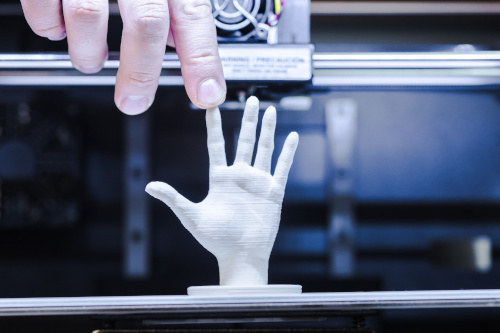If the pandemic has taught us anything, it’s that we must invest in educational technology. When schools use technology to improve the quality and quantity of educational content, learners will thrive. Amid this technology-driven educational environment, 3D printing offers students the following: helping to facilitate differentiated instruction, increasing student engagement, expanding practice opportunities, and scaling up standardized instruction.
No More One-Size-Fits-All Teaching
Differentiated instruction is a teaching approach that tailors instruction to all students’ learning needs. Most students are unlikely to get much from “one-size-fits-all” instruction. Instead, it should vary based on students’ interests, preferences, strengths, and struggles.
According to educator Carol Ann Tomilson, there are four different ways to differentiate learning: 1) Content: figuring out what a student needs to learn and which resources will help; 2) Process: activities that help students make sense of what they learn; 3) Projects: ways for students to “show what they know;” 4) Learning environment: how the classroom “feels” and how the class works together. 3D technologies can help support a differentiated approach to instruction.
Integrating the 3D design process allows students to synthesize different pieces of knowledge and apply what has been taught to them by designing their own creations. This spurs student creativity and improves learning and collaboration. In addition, students can bring objects out of textbooks and off computer screens to provide hands-on learning opportunities. As a result, students can be creators rather than just consumers.
Increased Student Engagement
When school curriculum is adaptive to a student’s unique needs, it’s more likely to promote student progress because each child can move at their own pace. 3D printing engages learners in a way like never before – it creates comfortable, personalized equipment, promotes hands-on, tactile learning, and makes learning fun and engaging.
In fact, a recent report found that while many schools were closed over the past year, respondents were still able to use 3D printing to support their lessons and drive student participation and engagement. For example, 57 percent of respondents stated that they used 3D printing for student-designed prototypes for problem-based learning projects, while 36 percent used 3D printed parts for specific lessons as a way to increase engagement. This is important as 48 percent of the respondents noted that low student engagement was a significant obstacle for virtual learning.
Thanks to 3D printing, these educators could incite more interest in topics as students could see firsthand how their ideas were being put to work. As this technology use continues to grow, they will be able to take those skills into various possible careers.
Expanding Practice Opportunities
The need for preparing our students has never been more acute. Of course, many are familiar with STEM (science, technology, engineering, and math) curriculum and how it prepares students to enter the workforce with practical, high-demand skills. But adding the arts alongside these subjects for STEAM learning can improve students’ academic performance. Adding art assignments to science and math lessons can better help low-achieving students understand STEM subjects and improve creativity—a valuable skill for any scholarly matter. In addition, STEAM curriculum provides students with a more well-rounded and practical education than STEM alone.
3D printing offers students a variety of learning experiences; students need to learn how different 3D printers work, operate them, and troubleshoot and solve problems. By feeding their creativity and analytical competence, 3D printing helps to foster growth in the STEAM fields and prepares students to meet the future demands of employers. Furthermore, teaching 3D printing across all ages, especially at the secondary school and higher education levels, will allow for more future growth of additive manufacturing as these students enter the job market. Introducing students to the applications of product design, engineering, architecture, entertainment, manufacturing, medical, automotive, and more, can help them identify what they’d be interested in doing as they mature.
Scaling Standardized Instruction
While educating and preparing the students for the workforce, it is also crucial to consider accessibility. 3D printing holds the promise to improve the quality of education through its capacity to deliver standardized quality content at scale. Educators can scale up instruction by distributing lessons to many students via prerecorded or live classes or by providing online learning platforms to help students learn visually and fine-tune their skills whether they are remote or in the classroom. They can also utilize print-from-anywhere machines. In practice, students can create models using remote software, where if a student makes a model on their home computer, it can be sent to the school for the final printing phase. Teachers can then provide feedback in-person, by email, or on a learning platform. By enabling distanced learning, 3D printing technology can help expand access to all students to ensure equitable quality education.
Over the coming years, we will continue to see tremendous growth in the use of 3D printing in education. It has an influential role in the classroom–boosting interactive learning, accommodating different learning styles, and ensuring equal access. In addition to solid curricular connections to modern standards, 3D printing not only engages students in their present learning but teaches them how to be creators for the rest of their lives.
- 7 reasons to ditch recipe-style science labs - November 22, 2024
- As a paradeducator, here’s how I use tech to help neurodivergent students gain agency - November 22, 2024
- 5 ways school districts can create successful community partnerships - November 21, 2024


